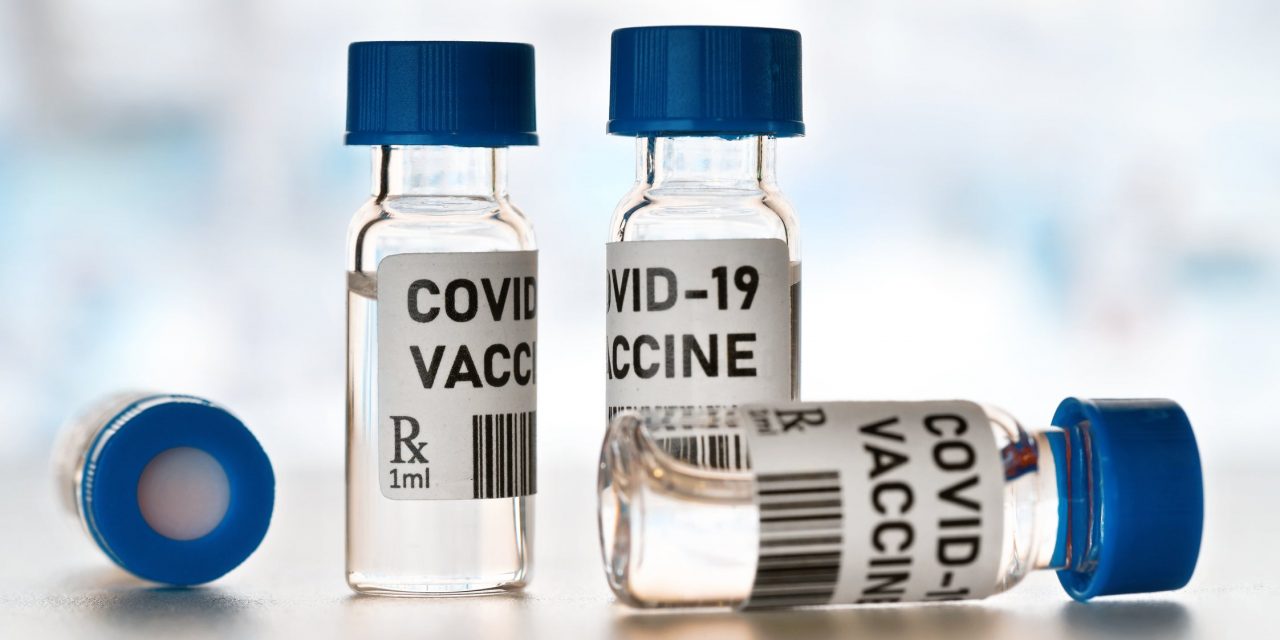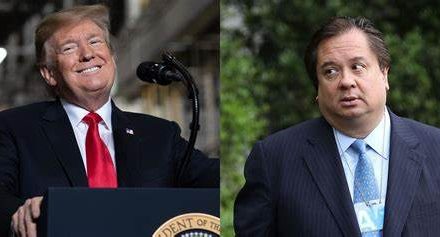As recently as mid-December, the Trump administration touted an ambitious goal: 20 million COVID-19 vaccinations by the end of the year.
But now, days before the end of the year, it appears that the actual number of vaccinations will fall significantly short of that mark.
A Centers for Disease Control and Prevention tracker shows only about 2 million people have been vaccinated so far. That figure is likely an undercount, given there is a lag in reporting the data, but it is still well short of 20 million.
Administration officials said Tuesday that they are still on track to allocate 20 million doses to states by the end of the year, but that is different from those doses actually making it all the way into people’s arms.
Experts are pressing he government to ramp up the pace, saying states need more support.
The Trump administration’s Operation Warp Speed delivers vaccines to the states, but the “last mile” of getting vaccines into people’s arms has largely been left to states to figure out, at a time when state health departments are strapped for cash and overwhelmed.
“States were kind of left on their own, like so many things across the course of this pandemic,” said Josh Michaud, associate director for global health policy at the Kaiser Family Foundation. “What we’re seeing is the fruits of that patchwork approach.”
President-elect Joe Biden, who has avoided day-to-day confrontations with President Trump, on Tuesday did criticize the administration for moving too slowly on vaccinations.
“The Trump administration’s plan to distribute vaccines is falling far behind,” he said, vowing that as president he would direct a “much more aggressive effort, with more federal involvement.”
The Trump administration had a “misperception” that “shipping the vaccine was success,” instead of following all the way through to vaccinate people, said Claire Hannan, executive director of the Association of Immunization Managers, which represents states’ vaccination officials.
She added that the projection of 20 million vaccinations by the end of the year was “way off to start with.”
“I don’t know why that was said, honestly,” she said.
Trump administration officials themselves are acknowledging the 20 million vaccinations figure will not be met.
“Exactly how fast the ramp up of immunizations, shots in arm, is happening, is slower than we thought it would be,” Moncef Slaoui, the chief scientific adviser for Operation Warp Speed, said at a press briefing last week, adding that states should tell them their “asks” on what they need to accelerate the effort.
“That objective is unlikely to be met, 20 million people with a shot in arm [by the end of the year],” he said.
Some experts said more planning should have been done ahead of time, and warn that the vaccine effort could match the disarray of the early testing effort that put the United States on the backfoot in the opening months of the pandemic.
Ashish Jha, dean of the Brown University School of Public Health, tweeted that he is “incredibly frustrated.”
“There appears to be no investment or plan in the last mile,” he wrote. “No effort from Feds to help states launch a real vaccination infrastructure. Did the Feds not know vaccines were coming? Shouldn’t planning around vaccination sites, etc not have happened in October or November?”
States were left with only small amounts of funding to prepare for vaccine distribution for months while Congress remained deadlocked over an aid package.
President Trump finally signed into law the relief package on Sunday, which provides an infusion of $8.75 billion for vaccine distribution.
“That money will certainly help,” Michaud said. “It would have helped even more six months ago.”
As recently as Dec. 13, Secretary of Health and Human Services Alex Azar was striking a more upbeat note on vaccination numbers.
Asked on CBS’s “Face the Nation” if the administration still expected to vaccinate 20 million people by the end of December, Azar replied, “Oh sure, yes,” later repeating “20 million vaccinations this month.”
In a statement on Tuesday, Michael Pratt, chief communications officer for Operation Warp Speed, stuck to a narrower claim about 20 million doses being allocated to states (but not all actually administered to people yet).
“These doses are being distributed at states’ direction to the American people as quickly as they are available and releasable, and the rapid availability and distribution of so many doses – with 20 million first doses allocated for distribution just 18 days after the first vaccine was granted emergency use authorization – is a testament to the success of Operation Warp Speed,” he said.
Hannan, of the state vaccination managers, said stronger communication with the federal government about allocations and other issues would be helpful. Another way to speed up vaccinations would be to open them up to more people, given that right now vaccinations are very targeted at health care workers and nursing home residents.
“You’re going to have states open it up even though they’re still vaccinating health care workers because they don’t want vaccine sitting on shelves,” she said.
Gen. Gustav Perna, the chief operating officer for Operation Warp Speed, apologized earlier this month for a “miscommunication” with states over their vaccine allocations.
Anthony Fauci, the government’s top infectious disease expert, gave Perna credit for making that acknowledgement and said he expects an “increase in momentum” in the vaccination effort in January.
Pace of vaccinations falls short of estimates, prompting alerts
© Getty Images
As recently as mid-December, the Trump administration touted an ambitious goal: 20 million COVID-19 vaccinations by the end of the year.
But now, days before the end of the year, it appears that the actual number of vaccinations will fall significantly short of that mark.
A Centers for Disease Control and Prevention tracker shows only about 2 million people have been vaccinated so far. That figure is likely an undercount, given there is a lag in reporting the data, but it is still well short of 20 million.
Administration officials said Tuesday that they are still on track to allocate 20 million doses to states by the end of the year, but that is different from those doses actually making it all the way into people’s arms.
Experts are pressing he government to ramp up the pace, saying states need more support.
The Trump administration’s Operation Warp Speed delivers vaccines to the states, but the “last mile” of getting vaccines into people’s arms has largely been left to states to figure out, at a time when state health departments are strapped for cash and overwhelmed.
“States were kind of left on their own, like so many things across the course of this pandemic,” said Josh Michaud, associate director for global health policy at the Kaiser Family Foundation. “What we’re seeing is the fruits of that patchwork approach.”
President-elect Joe Biden, who has avoided day-to-day confrontations with President Trump, on Tuesday did criticize the administration for moving too slowly on vaccinations.
“The Trump administration’s plan to distribute vaccines is falling far behind,” he said, vowing that as president he would direct a “much more aggressive effort, with more federal involvement.”
The Trump administration had a “misperception” that “shipping the vaccine was success,” instead of following all the way through to vaccinate people, said Claire Hannan, executive director of the Association of Immunization Managers, which represents states’ vaccination officials.
She added that the projection of 20 million vaccinations by the end of the year was “way off to start with.”
“I don’t know why that was said, honestly,” she said.
Trump administration officials themselves are acknowledging the 20 million vaccinations figure will not be met.
“Exactly how fast the ramp up of immunizations, shots in arm, is happening, is slower than we thought it would be,” Moncef Slaoui, the chief scientific adviser for Operation Warp Speed, said at a press briefing last week, adding that states should tell them their “asks” on what they need to accelerate the effort.
“That objective is unlikely to be met, 20 million people with a shot in arm [by the end of the year],” he said.
Some experts said more planning should have been done ahead of time, and warn that the vaccine effort could match the disarray of the early testing effort that put the United States on the backfoot in the opening months of the pandemic.
Ashish Jha, dean of the Brown University School of Public Health, tweeted that he is “incredibly frustrated.”
“There appears to be no investment or plan in the last mile,” he wrote. “No effort from Feds to help states launch a real vaccination infrastructure. Did the Feds not know vaccines were coming? Shouldn’t planning around vaccination sites, etc not have happened in October or November?”
States were left with only small amounts of funding to prepare for vaccine distribution for months while Congress remained deadlocked over an aid package.
President Trump finally signed into law the relief package on Sunday, which provides an infusion of $8.75 billion for vaccine distribution.
“That money will certainly help,” Michaud said. “It would have helped even more six months ago.”
As recently as Dec. 13, Secretary of Health and Human Services Alex Azar was striking a more upbeat note on vaccination numbers.
Asked on CBS’s “Face the Nation” if the administration still expected to vaccinate 20 million people by the end of December, Azar replied, “Oh sure, yes,” later repeating “20 million vaccinations this month.”
In a statement on Tuesday, Michael Pratt, chief communications officer for Operation Warp Speed, stuck to a narrower claim about 20 million doses being allocated to states (but not all actually administered to people yet).
“These doses are being distributed at states’ direction to the American people as quickly as they are available and releasable, and the rapid availability and distribution of so many doses – with 20 million first doses allocated for distribution just 18 days after the first vaccine was granted emergency use authorization – is a testament to the success of Operation Warp Speed,” he said.
Hannan, of the state vaccination managers, said stronger communication with the federal government about allocations and other issues would be helpful. Another way to speed up vaccinations would be to open them up to more people, given that right now vaccinations are very targeted at health care workers and nursing home residents.
“You’re going to have states open it up even though they’re still vaccinating health care workers because they don’t want vaccine sitting on shelves,” she said.
Gen. Gustav Perna, the chief operating officer for Operation Warp Speed, apologized earlier this month for a “miscommunication” with states over their vaccine allocations.
Anthony Fauci, the government’s top infectious disease expert, gave Perna credit for making that acknowledgement and said he expects an “increase in momentum” in the vaccination effort in January.
“We certainly are not at the numbers that we wanted to be at the end of December,” Fauci said on CNN on Tuesday, saying the sooner vaccines can get from the top priority groups to the general population, the better.
“When you get to the point where you can essentially say everybody and anybody who wants to be vaccinated, can be vaccinated, that’s when you really turn around the dynamics of the outbreak,” he said.
The Hill





